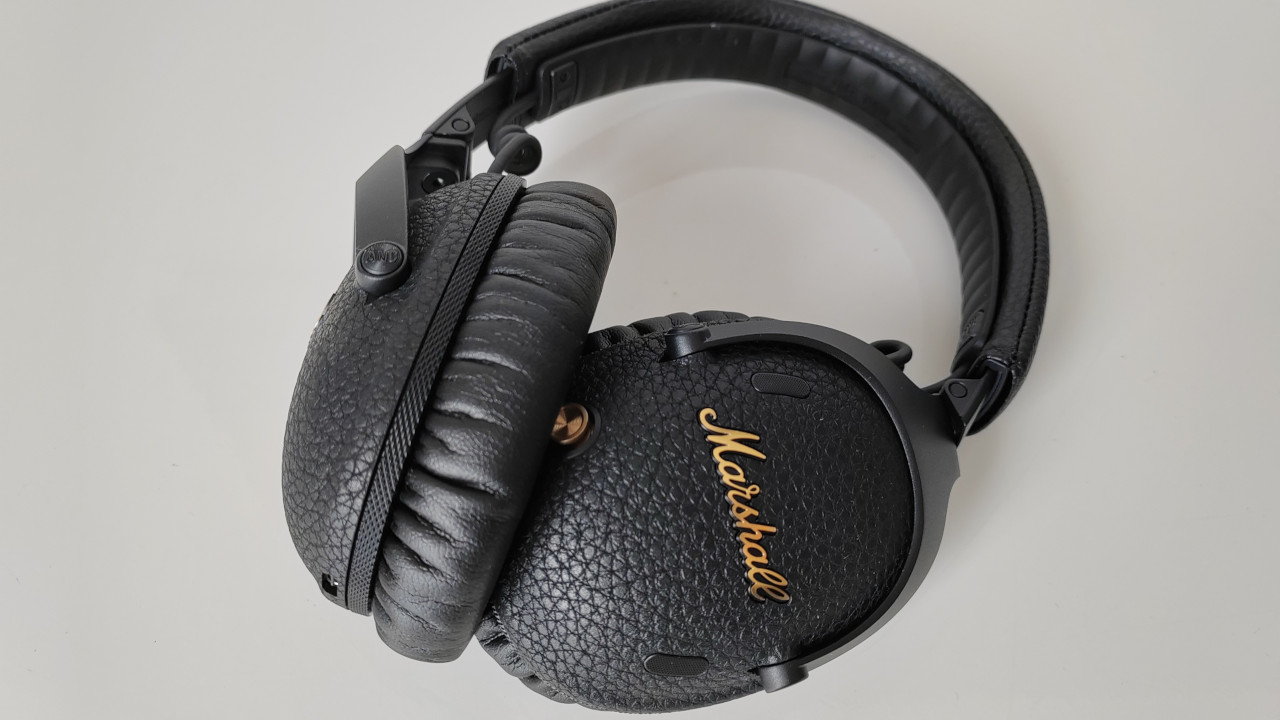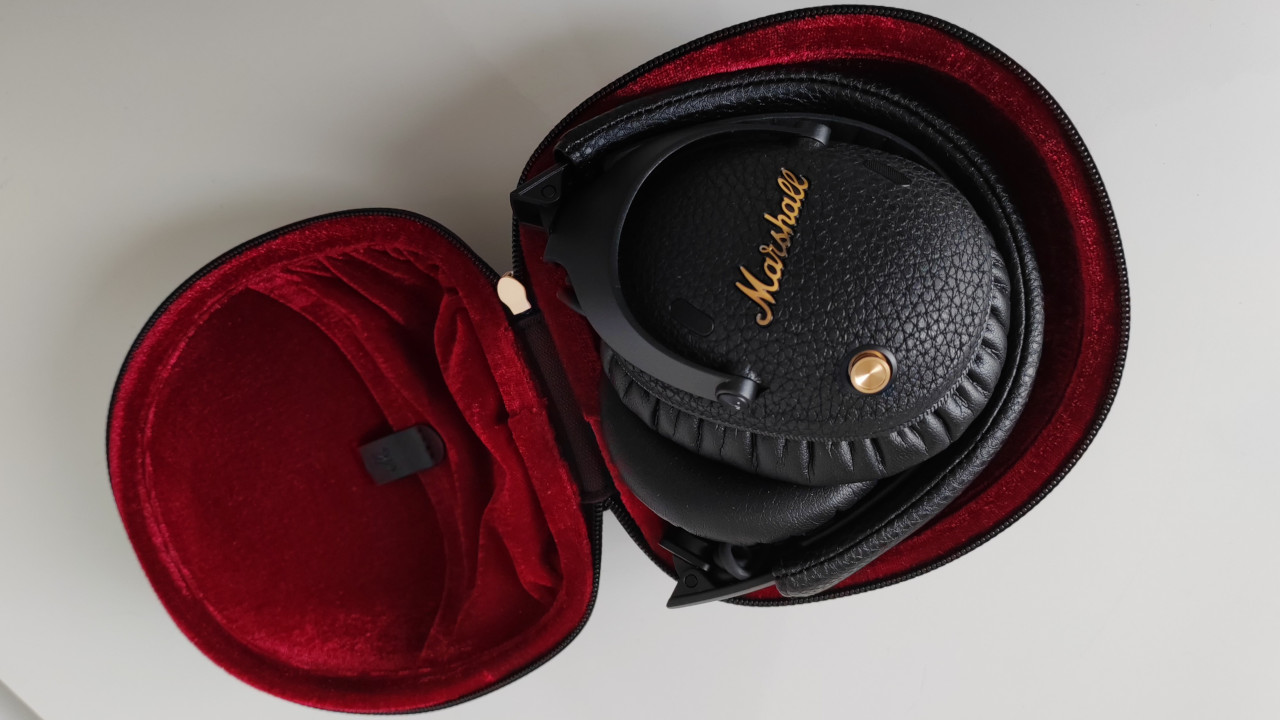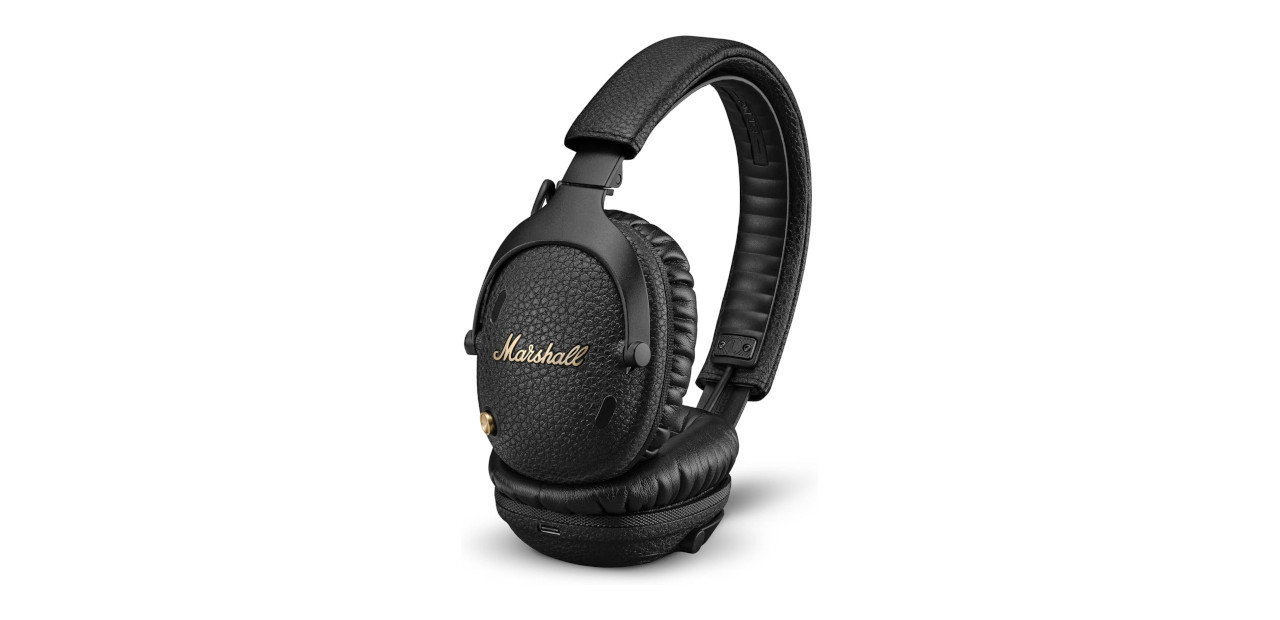Boasting bags of battery life plus concessions to comfort, the Marshall Monitor A.N.C. headphones warrant careful consideration. They’re comfortable, sound terrific and have some cool new functionality, including Soundstage spatial audio post-processing that gives everything you listen to a live ambiance.
Battery life is also now among the best in the business: Fully charged, you’ll enjoy 70 hours of playtime with Active Noise Cancelling engaged.
They also fold down making them easy to pocket when not in use. So is it finally time to bag a pair of Marshall headphones?
Marshall Monitor III A.N.C: Design
Over-ear headphones tend to look a bit anonymous, but you can spot a pair of Marshalls a mile off. That distinctive leathered finish, iconic metal Marshall logo and multidirectional control knob, remains the epitome of rock club style.
For this third generation model there have been some changes. Weight has been shaved off, ear pads are softer, and built-in microphones have been tweaked to better combat wind noise when taking a call out and about.
Control remains simple and intuitive - there’s no touch-sensitive swiping required. In addition to that multidirectional control knob, there are dedicated buttons for ANC and customisation.
Helping with battery life is the adoption of Bluetooth 5.3 with LE Audio; this means the headphones are Auracast compatible. This new standard allows you to share your source with compatible devices. It’s a feature that we’ll doubtless hear more of over the coming year.
More traditionally, there’s a USB C port on the left hand shell which can be used both for changing and hooking up portable music players.
These are great headphones to travel with, and not just because of generous battery life. They fold down to take up less space, and come with a compact carry-case that’s actually lined with red velvet, made to look just like a guitar carry case.
Marshall Monitor III A.N.C: Features

Customisation is the name of the game. The headphone’s 'M' button can be assigned to your phone’s voice assistant, Soundstage Spatial Audio, equaliser or Spotify Tap, a new one-touch Spotify play command. A dedicated Noise Cancellation button toggles between full ANC and a Transparent mode.
The Marshall app unlocks the full feature roster. Here you’ll find an Adaptive Loudness button along with a number of presets including Bass Boost, Treble Boost and Mid Reduction. Select Custom and you’ll have access to a five-band equaliser. For the most part, these headphones were auditioned in Marshall mode, the default setting which uses Marshall’s own pre-tuned sound style.
Soundstage spatial audio is particularly interesting. It effectively creates a sense of live ambiance, adding a sense of distance and reverb to whatever you’re listening to. It’s not suitable for everything, but it does spread music out making it more akin to listening live or at the very least, on loudspeakers.
Marshall Monitor III A.N.C. : Sound

It should surprise no one that these third gen Monitors are a rollicking good listen. They benefit from that characteristic Marshall buzz-saw edge, which is always exciting to listen to, without sacrificing tonal accuracy. The top end is crisp without being sibilant, and the mid-range rounded without sounding flabby.
Noise cancelling performance is also good. My main criteria with any ANC is the ability to nullify the general excesses of a public transport commute, and to that extent, they work extremely well. Unwanted exterior noise is pushed back leaving tracks plenty of room to breathe.
Sonic staging is excellent with pronounced separation when required, and glue-like coherence. Be it ping pong stereo or full blown metal thrash, the Monitor’s retain their focus.
The stereo is so wide on One For The Road, from Judas Priest’s Rocka Rolla debut, you could park a Harley in the gap between. The track opens right, brings percussion in centrally and then drops riffs to the right. Before I knew it, I was fully centre stage with the fresh-faced metal gods.
Rather more complex, Incinerator from Bear McCreary’s The Singularity, is a tsunami of guitar riffs and bullet train drumming. Yet for all the mayhem, Serj Tankian’s vocal remains authentically melodic.
The Marshall’s refinement really shines with hi-res sources. Instruments snap into subtle focus, and there’s a tangible reality to their presentation. Elvis Costello’s plaintive vocals on Indoor Fireworks from King Of America, are intense and personal, while Radiohead’s remarkable Burn The Witch, with its insistent, plectrum-stabbing strings, spins with weight and heft.
If these headphones do have an Achilles’ heel, it’s a lack of deep bass. This may be attributable to the 32mm dynamic drivers used, which are hardly the largest in their class (Sony’s WH-1000XM5 have 40mm drivers and drop deeper). This can be countered somewhat from the bass boost which is available in the Marshall app.
The alternatives
Bowers & Wilkins PX7 S2e
Going toe to toe with the Marshall Monitor III A.N.C, the PX7 offer aptX Adaptive Bluetooth and enjoy the benefits of big 43mm drivers, capable of banging bass and excellent sonic articulation. However, they’re nowhere as comfortable, they don’t fold down for easy travelling, and battery life is a paltry 22 hours.
Sony WH-1000XM5
The latest iteration of Sony’s best-selling 1000x model is no slouch when it comes to style and comfort. Memory foam ear cups stay the course, although battery life once again falls behind the Marshall Monitor III A.N.C. The Sony headphones edge ahead when it comes to noise cancelling efficiency, and clever usability features, like Adaptive Sound Control, but they also have the smallest drivers, just 30mm.
Related buyer's guides
- Best Marshall speakers : Portable power & home hi-fi
- Loudest headphones : You want volume? You got it
- Best headphones for music : Get the most from your sounds
- Best budget wireless headphones : Cut the cables
- Best earbuds and in-ear headphones : Get the perfect fit
- The best over-ear headphones : Perfect at home or on the go

